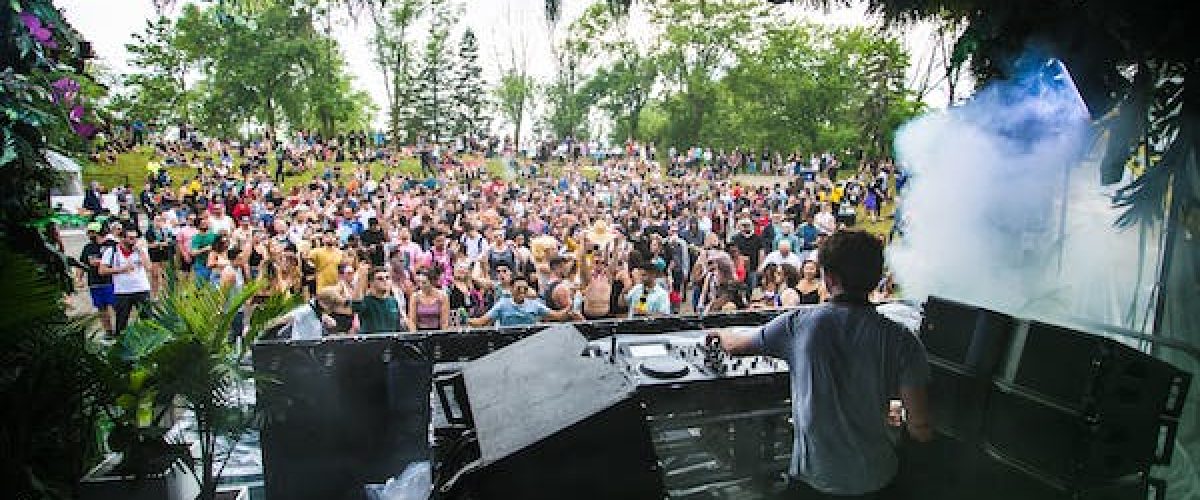The following is the opinion of Robert M. Brecht, Ph.D., Managing Partner of TSE Entertainment.
When it comes to fair and festival sponsorship development, many fairs and festivals struggle to find sponsors for their events. Respondents to a survey of members of the Texas Festivals and Events Association clearly indicated that the two biggest challenges to putting on their events were staffing/volunteers and sponsorships.
Other Reasons for Sponsors
- Credibility
- Promotion
Any festival, county, regional or state fair benefits from having good sponsoring brands. Besides the obvious of providing funding or in-kind resources, there are two other reasons why you want good companies sponsoring your fair or festival. The first is credibility. Having a well-known brand as a sponsor adds credibility to your event. After all, such a brand wouldn’t attach their name to a poorly organized event. The second reason is that sponsoring organizations can help promote your event to their followers or fans. That kind of promotion is important. It’s also a reason that influencer marketing is now a big part of festival or fair promotion.
3 Reasons Why Fair and Festival Sponsorship Efforts Don’t Achieve the Results They Desire
There are reasons why finding sponsors is difficult for this group and other fair and festival organizers. Our experience at TSE is that for most, it boils down to one or more of the following reasons.
- Lack of Expertise
- Lack of data
- Sponsorship Assets Don’t Align
Lack of expertise
When it comes to fair and festival sponsorship sales, we often find a lack of expertise when it comes to county fairs, festivals, etc. Our experience is that many fairs and larger festivals may have only one or two staff people serving under a volunteer board for the event. For many this small staff handles the festival or fair’s operations, finances, etc., including developing sponsors for their event.
The staff are often overworked and don’t have the time to stay abreast and implement the latest approaches to sponsorship development. Some are stuck in their ways of doing things and not looking to change. Volunteer boards on organizing committees lack the expertise to judge the efforts of their staff when it comes to keeping up with sponsorship development approaches. The result is that year after year they take the same approach to sponsorship development. The result is ending up with the same sponsors as the previous year and very little growth in sponsorship dollars to support their event.
This small staff may also be defensive when it comes to their work in securing sponsors for their fair or festival. With a volunteer board that changes over time, it’s this small administrative staff that provides continuity to the event. For that reason, volunteer boards often don’t want to rock the boat and compel a different approach to selling sponsorships. When a board or organizing committee considers using professionals to do their sponsorship development, often the staff takes that as an affront to their work. If so, they may resist the change in a passive aggressive manner.
It’s hard to understand the resistance since outsourcing sponsorship sales can help a small staff, allowing them to concentrate their efforts on other facets of the fair or festival. More time allows them to improve the overall experience of attendees at the fair or festival. Nevertheless, in our experience such resistance is a common occurrence.
Large fairs for the most part stay abreast of the latest sponsorship trends and have sponsorship sales professionals doing their sponsorship sales and asset development work. They can afford to do that because they draw large numbers of people to their events, some in the millions. They also take place for longer periods of time creating more exposure to sponsorship assets. Take the State Fair of Texas. It runs for 24 days and the 2023 fair welcomed more than 2.3 million people through the gates.
Key Take Away
Unless your fair or festival is large and you can afford dedicated sponsorship sales staff, you should consider outsourcing your sponsorship development program. You should not expect a small festival or fair staff to handle sponsorship sales along with all the operational aspects of putting on such events. The staff should recognize their limitation when it comes to this specialized area and not feel defensive if the event’s organizing committee or board seeks a different approach to sponsorship development.
Lack of data
Some local vendors see supporting a festival or fair sponsorship as more of a charity contribution for community goodwill. Many of the lower tier sponsorship assets sponsored by local businesses fall into this category of community goodwill in their minds. If it’s a community event organized by a government or nonprofit agency, events can attract local businesses to their event despite lacking data on those who attend the event. It’s enough to know that it’s a “family” or “food,” etc. for these businesses to participate.
However, if your goal is to attract higher level sponsors from regional or national brands you won’t do it without data. That data should include: What do you have to offer a sponsor? What is the affinity between the potential sponsor and those attending your fair or festival? There should be an alignment between the brand’s target audience, values and those attending your event.
Attendance numbers alone won’t cut it. The way you establish that alignment is by having data about the people attending your fair or festival. The more information you have about them the better. You should not only have demographics, but also psychographic information, i.e., interests, habits, behaviors, etc.
You should have data such as attendees’:
- Average age
- Sex
- Race
- Home location
- Education
- Travel to the event
- Employment
- Social Media Use
- Comparison with other events
- Food interests
- Previous interactions with sponsorship assets
There are several ways to get the information potential brands want before considering sponsoring your fair or festival. They include your ticketing platform for ticketed events; your event app; Facebook event page, and specific apps that track total numbers of people for specific locations and times, during your event.
The goal is to utilize the data you have collected to craft a sponsorship pitch to each brand that your research has shown may be a good fit for sponsoring your fair or festival. The more you can individualize your sponsorship proposition, the more likely you will end up with the sponsors you want.
Sponsorship Assets Don’t Align
It’s easy to see how out-of-date fairs and festival sponsorship practices are when it comes to the latest trends in sponsorship development and sales. Look at their website. If you see packages listed such as bronze, silver or gold or the same kind of packages by a different name with what you get and a price, you know they aren’t keeping up with sponsorship trends. Maybe such packages appeal to those who are sponsoring for goodwill purposes, but they are not what brands are looking for these days. Enough with the banners! Sponsors want to engage with attendees in an immersive way. Banners don’t do that. Of course, banners can be part of something larger in the way of a sponsorship asset. Instead of listing these “packages” use broader language for sponsorship assets. Why broad language? Because larger sponsors will want to be a part of designing their asset(s) for the event. It’s a partnership with the brand and your fair or festival. You need a sponsor for “midway” or “kids’ zone” or whatever, then state those in broad terms and allow the potential sponsor to help design their asset. They will help you find the right sponsorship asset that aligns with their brand.
Getting them involved with designing their sponsorship assets also translates into a much more meaningful engagement for the brand with your fair or festival. With involvement comes ownership.
Which brings me to the next point. Don’t publish prices for sponsorship assets except for the lowest tiers of assets. Anyone in sales will tell you that you only bring up the price after you sold them on the benefits of whatever they are selling. Publishing prices or including pricing in your initial presentation means it will become the primary focus of the potential sponsor. Instead, you want to funnel larger potential sponsors to someone who is well versed in developing sponsors for festivals and fairs.
These professionals know that you start a relationship with a “getting to know” session that allows them to learn more about the brand’s goals for such events while educating them about your event and how it aligns with what you know about the brand. Yes, that means you need to research the brand and its target audience before you approach them. The biggest mistake most people make is forgetting to do enough research. That research encompasses the potential sponsor brand and their values and target audience to see if your event is a good match for them. The research should also include finding out what others are charging for certain assets with similar events.
Remember that sponsorship is a partnership between the event and the sponsoring brand. Take it or leave it sponsorship assets don’t work in that kind of relationship. Be open to working with companies to create sponsorship assets and activations that appeal to them. That’s the kind of relationship that will have the brand coming back year after year.
Remember that brands are looking for ways to engage with your attendees prior to, during, and after the fair or festival. Focus on ways you can provide them to engage with your attendees on an ongoing basis. Remember a banner or a logo is not engagement.
Conclusion:
Utilizing a small staff and volunteers makes it difficult to achieve the level of fair or festival sponsorship any fair or festival wants to grow their event. Researching companies to find the right alignment and then pitching to them is difficult for overworked staff and volunteers. Working with potential companies to Identify the right sponsorship assets and how best to activate them is another challenging task for a volunteer organization. That’s why so many fairs and festivals just use fixed “packages” with little time spent customizing assets to individual sponsors.
Unless your fair or festival sponsorship team is very sophisticated, they will unlikely be able to maximize your sponsorship potential. The result is the same sponsors year after year supporting your festival or venue. Nothing wrong with that. But just think if you could keep the ones you have and add additional bigger brands every year.
That’s why having a talented team of sponsorship sales professionals to assist you is the first step in securing more sponsorships. Your event or venue is an important investment, and your goal is to have a successful event, both financially and with happy attendees. Turn to individuals with brand relationships and a successful sponsorship sales history. Nothing beats a seasoned professional to handle this aspect of your festival or event.
Related Posts:
Keys to Festival and Event Sponsorship Development




